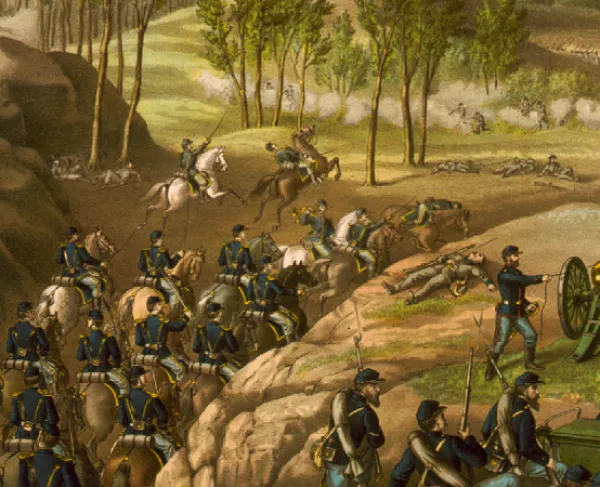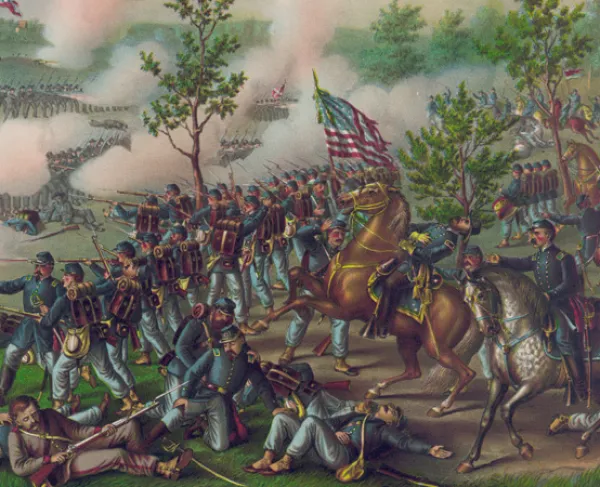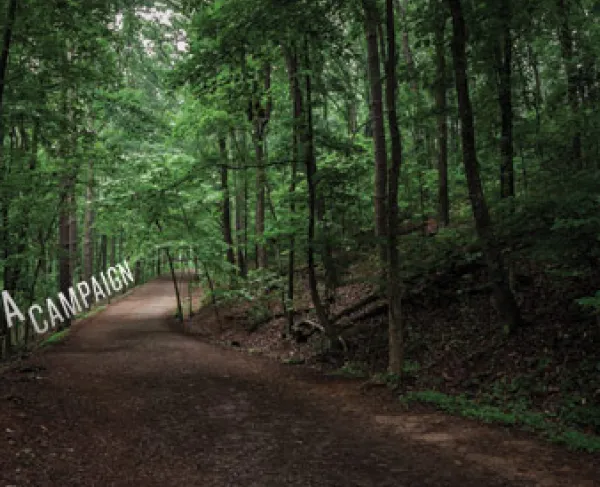10 Facts: Resaca
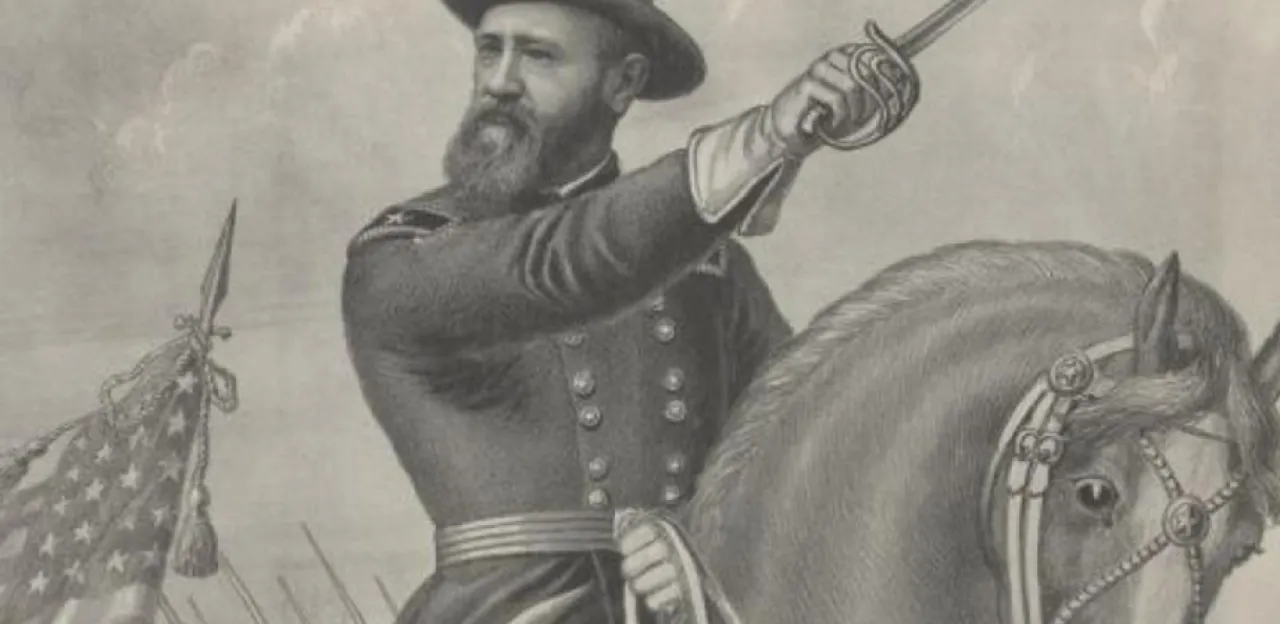
The Battle of Resaca had the second highest casualties of the entire Atlanta Campaign. Please consider these 10 facts to expand your knowledge of and appreciation for one of the Atlanta Campaign's bloodiest battlefields.
Fact #1: Sherman's objective at Resaca was to cut the Western & Atlantic Railroad.
The Western & Atlantic Railroad was the lifeline of both Union and Confederate armies in Northern Georgia. Gen. Joseph E. Johnston relied on it for a steady stream of supplies from points south; Maj. Gen. William T. Sherman used it to bring food and ammunition to his army as they penetrated deeper into enemy country. With a keen understanding of these logistical concerns, Sherman knew he could pressure Johnston into retreat by cutting the rail line south of Johnston, while protecting it for himself in the north. During the winter of 1863-64, the Confederate had built a strong defensive line along Rocky Face Ridge and north of Dalton. Though Sherman enjoyed great numerical superiority (110,000 U.S. to 53,800 C.S.), he did not plan to assault the Confederate position like Grant was doing against Lee in Virginia. Rather, he planned to use demonstrations along the Rocky Face line to distract Johnston while sending a portion of his force under Maj. Gen. James B. McPherson to the south, beyond the Rebels' left flank and through the undefended Snake Creek Gap. From there, McPherson was to march east and cut the rail line near Resaca, thereby forcing Johnston to abandon his defenses at Dalton.
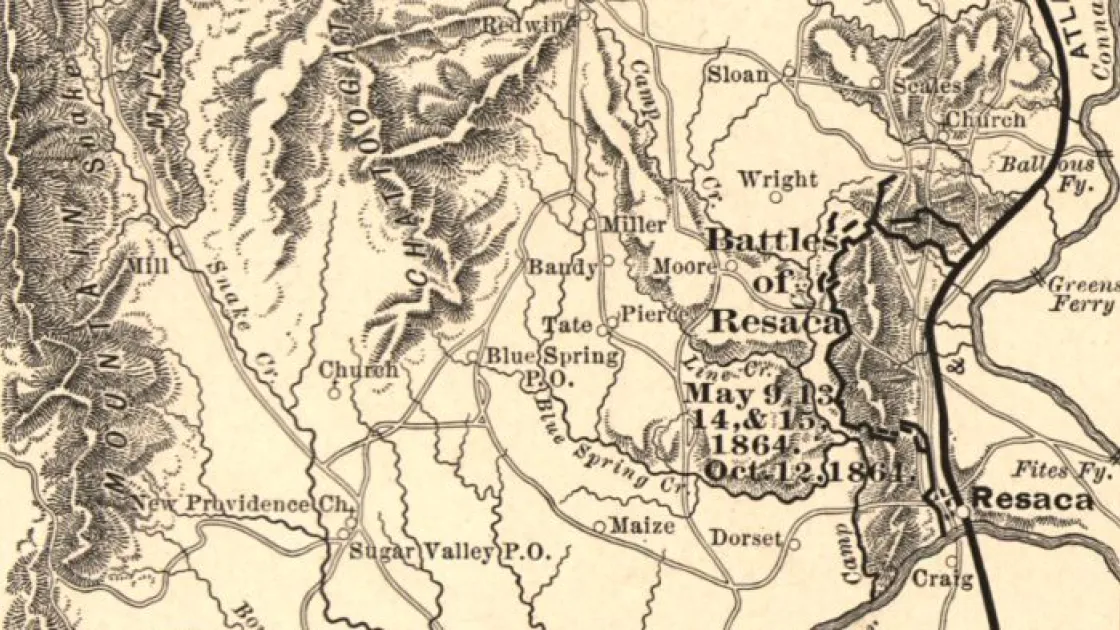
Fact #2: McPherson, concerned about Confederate defenders, could have taken Resaca prior to Sherman's arrival, but withdrew his troops instead, losing his opportunity to destroy the rail line.
Following Sherman's order to advance through Snake Creek Gap and strike the railroad at or near Resaca, McPherson had his troops on the march at 5 a.m. on May 9th, 1864. Brig. Gen. Thomas Sweeny, commanding the lead division, was able to take Bald Hill, forcing a Confederate retreat across Camp Creek, a deep-gullied stream running southward into the Oostanaula River, and back to the Confederate defenses. Sweeny's troops occupied Bald Hill, and from it were able to see Resaca and - the real prize - the railroad bridge over the Oostanaula. McPherson instructed Sweeny's division to hold Bald Hill while he sent other troops probing to the northeast for an approach to the railroad. But then McPherson lost his nerve. Worried that Johnston would send troops down from Dalton to drive him back, McPherson ordered Sweeny back to Snake Creek Gap. The Union infantry withdrew, abandoning Bald Hill. Upon learning that McPherson had failed to cut the railroad at Resaca, Sherman was disappointed "beyond measure." He ordered McPherson to dig in while he brought the rest of the army through Snake Creek Gap. Unfortunately for Sherman, the Confederates were digging in as well.
Fact #3: The Battle of Resaca was the first time all three of Sherman's armies were on the same field simultaneously.
From March 18th, 1864, Sherman led the Military Division of the Mississippi, which was composed of men from three different departments. The largest, Maj. Gen. George H. Thomas' Army of the Cumberland, had 72,938 officers and men in three infantry corps. The men in the Fourth and Fourteenth corps were mostly western men, veterans of Perryville, Stones River, and Chickamauga, The Twentieth Corps was made up of men from the Army of the Potomac who had been transferred to relieve Chattanooga in 1863. Maj. Gen. John M. Schofield's Army of the Ohio consisted only of a single corps, the Twenty-third, numbering roughly 12,805 soldiers. Finally Maj. Gen. James McPherson's Army of the Tennessee with its two corps - men who had fought under Grant and Sherman at Shiloh and Vicksburg - numbered 24,380 men. Prior to 1864, all three of these armies had operated independently of one another. Under Sherman's command, however, these three previously independent forces would now operate together with one objective: the capture of Atlanta.
After McPherson's Army of the Tennessee failed to cut the railroad on May 9, Sherman ordered his other two armies to march through Snake Creek Gap and take position opposite the Confederate positions around Resaca. Thus, when the Federal forces were engaged on May 14 and 15, it was the first time all three of these armies were united on a single battlefield.
Fact #4: Sherman's attack at Resaca was a diversion as Sweeny's Sixteenth Corps crossed the Oostanauala River at Lay's Ferry, where they began to advance on Johnston's supply line.
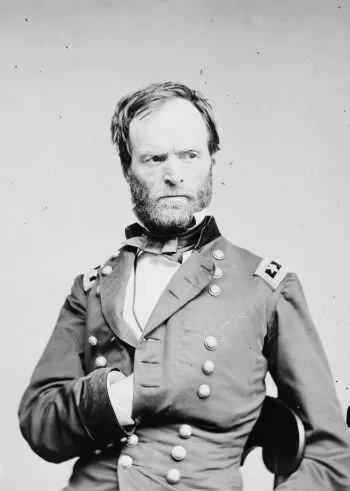
Near dawn on May 14th, Sherman ordered Sweeny to cross the Oostanaula River, planning on sending two cavalry divisions behind him once the crossing was completed to destroy the rail line south of Calhoun. He simultaneously ordered a forward movement by the left of his line, thereby distracting the Confederates from Sweeny's activities. Sweeny found Lay's Ferry to be a good crossing place, with Snake Creek emptying into the river about 100 years south of the ferry itself. Sweeny ordered the majority of his men to drive the Confederates away from the ferry, while a smaller force effected the crossing. Faulty intelligence regarding the Confederates' whereabouts caused Sweeny to withdraw for a short time before successfully fording the river on the 15th and establishing a Union presence there.
Fact #5: Johnston sent Hood's corps against the Union line on May 14th, where they scattered the Union troops before being cut short by a six-gun battery.
When Johnston received word that the Union left flank had no support and was vulnerable to attack, he decided to order an assault, hoping to strike a blow against Sherman. The brigades of Maj. Gen. Carter Stevenson's and Maj. Gen. A.P. Stewart's divisions of Lt. Gen. John B. Hood's corps were joined by a few units from the Confederate left and attacked it in the early evening on the 14th. They were able to overrun the Union trench line, sending its occupants fleeing form the charge, but were soon stopped short by a Union six-gun battery under Capt. Peter Simonson. The confederate forces attempted to break through the guns three subsequent times, but finally withdrew when Federal reinforcements arrived and drove them back.
Fact #6: Future United States President Benjamin Harrison led the 70th Indiana in a charge against Van Den Corput's Battery.
On the morning of May 15th, Stevenson ordered Capt. Maximillian Van Den Corput's "Cherokee Battery" of four Napoleons to be placed in front of the Confederate line. Though dangerous, this placement ensured that the artillerymen would have clear lines of sight. The Confederates places the guns in an earthen shelter, but before they were able to connect these pits with their main lines, two Union regiments, one, the 70th Indiana, led by future U.S. president Benjamin Harrison, attacked. It was a dangerous mission. Harrison and his troops advanced on the enemy's earthworks "whose strength, and even exact location, was only revealed by the line of fire which, with fearful destructiveness, was belched upon our advancing column." After entering and overtaking the Rebel soldiers, the Union troops, including Harrison, were forced to withdraw back down the slope due to heavy Rebel fire, leaving the guns of Van Den Corput's battery in no man's land between Union and Confederate lines. Neither side was able to reclaim the battery as 3 p.m. saw heavy skirmishes and artillery dueling that kept both forces pinned down. After dark, Union Brig. Gen. John Geary ordered troops to sneak forward, digging through the earthworks, and drag all four guns back to the Union line. The successful capture of Van Den Corput's pieces made the Cherokee Battery the only artillery lost by Johnston's army during the Atlanta Campaign.
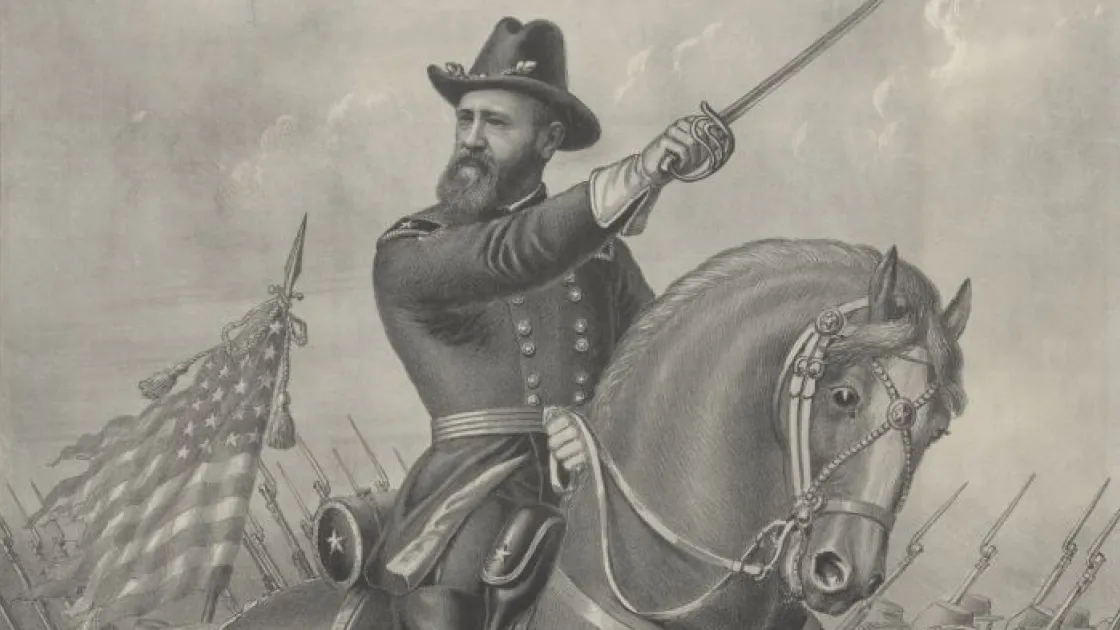
Fact #7: Though Resaca was a tactical victory for Johnston, he was unable to maintain his position once Sherman began to threaten his supply line and was forced to withdraw.
During the Battle of Resaca, Sherman's Union troops suffered great casualties, inflicted comparably few on Confederate troops, and did not gain any meaningful ground during the fighting. The fighting, however poor the result for the Union armies, did, however, attain its goal in distracting Johnston and his troops from the Union's attempts to cross the Oostanaula River at Lay's Ferry. Once Sweeny and his division crossed, making way for reinforcements, it would only have been a matter of time before Johnston's supply line at Resaca was cut. Though the Confederate line could have help against the attacking Federals, they could not do it without supplies. After receiving reports of the crossing, Johnston was finally forced to withdraw. In the late afternoon of the 15th of May, Confederate troops began to pull back, though some skirmishers remained, firing guns and making enough noise so Union forces would not suspect a retreat. By 3:30 a.m. on the 16th, Johnston had withdrawn from Resaca and Confederates had set fire to the rail line.
Fact #8: The Battle of Resaca was the second bloodiest battle of the Atlanta Campaign.
The summer of 1864 saw fierce fighting on two fronts: the Eastern and Western theatres. The casualties in the Easter theatre were catastrophically high: the Battle at Spotsylvania Court House in Virginia between May 8-21 totaled 30,000 casualties, while the Battle of the Wilderness between May 5-7 was nearly as high at 29,800. Resaca's number of combined casualties is comparatively low, with a total of 5,547 (2,747 Union, 2,800 Confederate). Compared to other battles in the Western theatre during the summer of 1864, however, Resaca is actually one of the highest, second only to the Battle of Atlanta which totaled 9,141 casualties. Other battles during the Atlanta Campaign, like Kennesaw Mountain, Jonesborough, or New Hope Church, do not even come close to Resaca's total, with their casualties estimated at 4,000, 3,149, and 2,015 respectively. Though not always considered one of the more significant battles of the Civil War, these figures - and the accounts of the battle themselves - demonstrate how devastating and strategically important the Battle of Resaca truly was.
Fact #9: The first Confederate cemetery in Georgia was established at Resaca.
Mary S. Green, a resident of Resaca, was dismayed at the bodies strewn on the fields after battle, and began collecting them to give them proper burials. With money she had collected and land from her father, Mary began burying soldiers in what is now the Resaca Confederate Cemetery, where 420 unknown Confederate soldiers' graves are arranged in concentric circles. The cemetery was founded on October 25, 1866.
Fact #10: The Civil War Trust and its partners have preserved more than 1,000 acres at Resaca.
Though much of the historical landscape - including the site of most of the Confederate earthworks - have been destroyed by modern day I-75, the Civil War Trust and its partners have been able to save a significant amount of important land at Resaca. From 1998 to 2000, the Georgia Battlefields Associations, working in concert with Friends of Resaca Battlefield, worked to purchase 505 acres of the Camp Creek valley that have since become a state battlefield park. Another 65 acres were purchased by Gordon County in 2003, where Fort Wayne, built by Confederates to guard the bridges over the Oostanaula River and later improved by Federals in the summer of 1864, originally stood. Finally, in March of 2011, with great effort on the part of the Civil War Trust and their partners (in this case, the Trust for Public Land, the American Battlefield Protection Program, and the Gordon County government), 483 acres of land east of I-75, along the Confederate right line - including the site of Van Den Corput's battery - were also able to be saved.
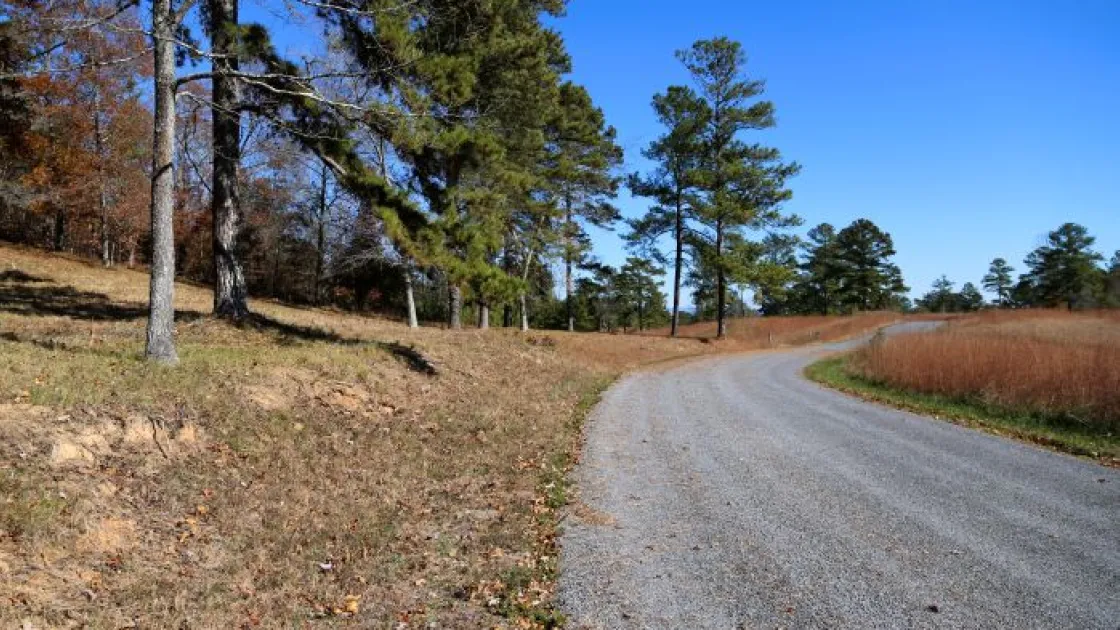
Learn More: War in the West
